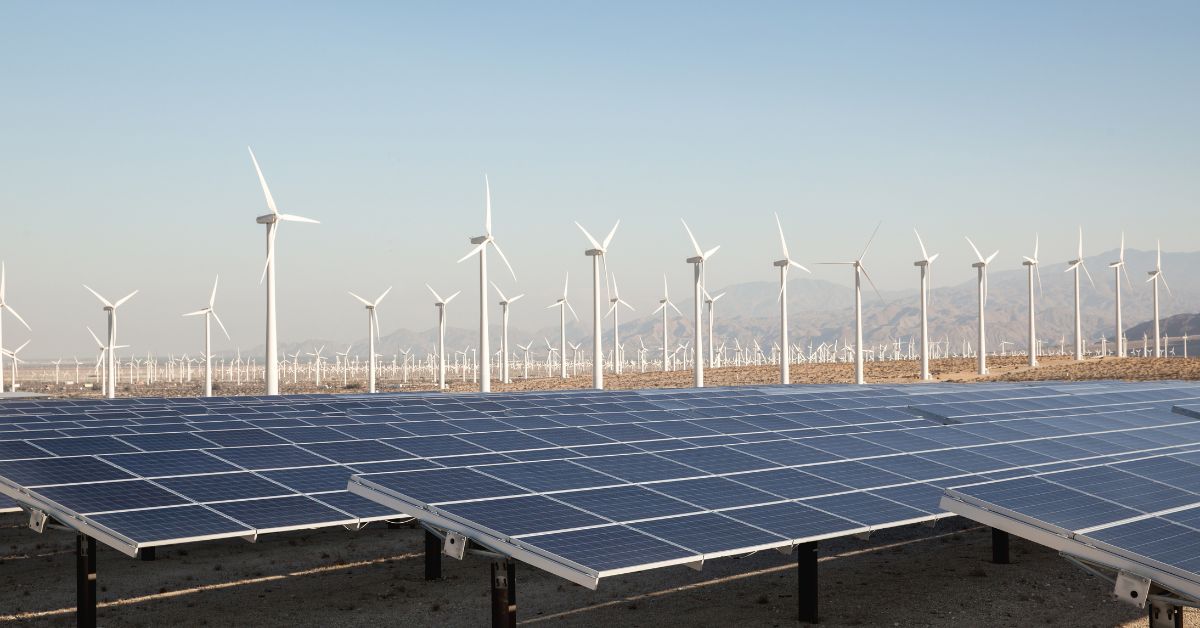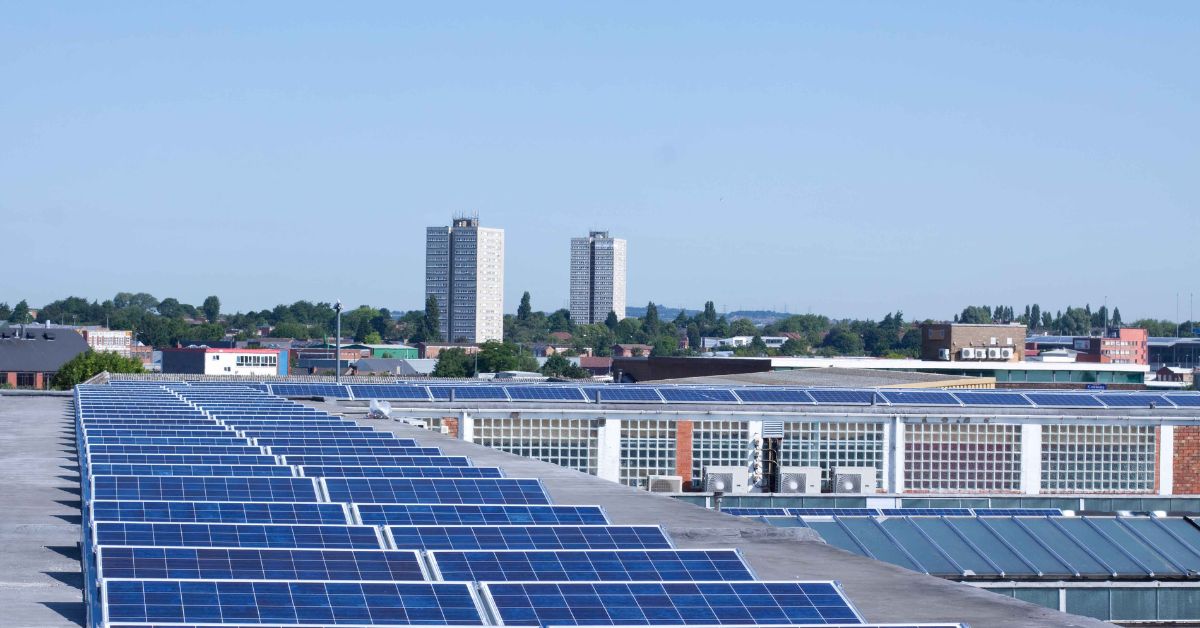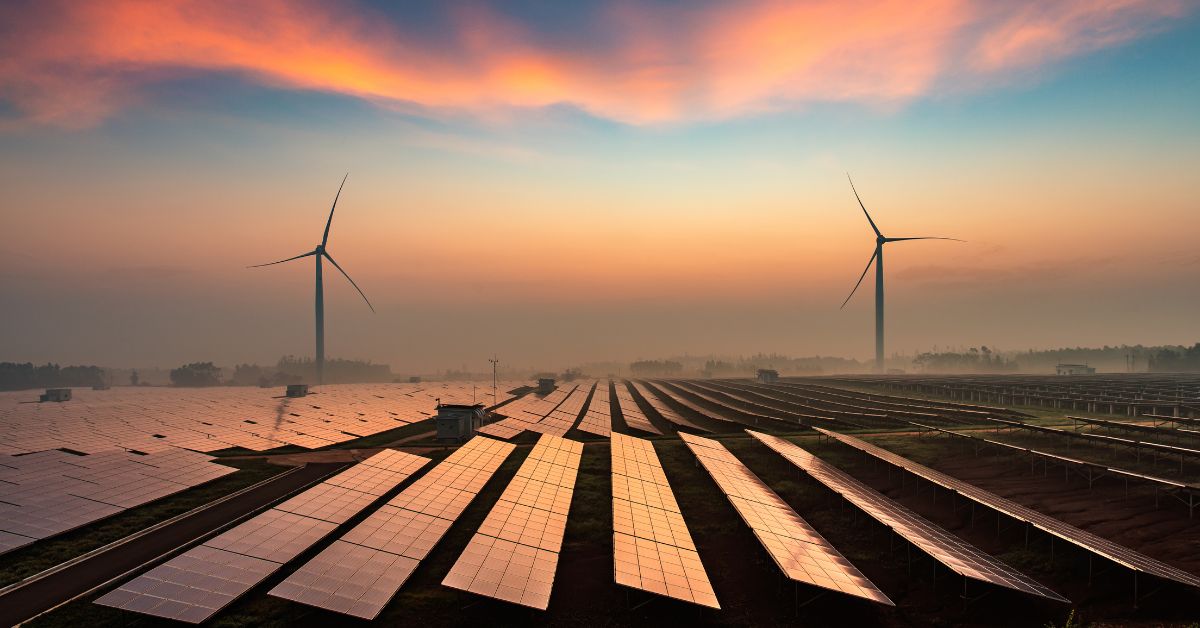Indias Solar Revolution Surging Past Japan to Claim Third in Global Rankings
know the details about Indias Solar Revolution Surging Past Japan to Claim Third in Global Rankings, India’s solar revolution has propelled the nation into the spotlight as it surged past Japan to secure the third position in global solar rankings.
This monumental achievement reflects India’s commitment to clean energy, driven by ambitious government policies, falling solar panel costs, and rapid infrastructure development. With abundant sunshine and vast land resources, India has installed over 70 GW of solar capacity, contributing significantly to its renewable energy goals. The country’s initiatives, such as the International Solar Alliance and solar parks, have further accelerated growth, positioning India as a global leader in the fight against climate change.
Table of Contents
Indias Solar Revolution Surging Past Japan to Claim Third in Global Rankings
India’s commitment to renewable energy has made headlines worldwide, particularly its strides in solar energy. Over the past decade, the country has experienced exponential growth in its solar power sector, ultimately propelling it into the spotlight as one of the global leaders in solar energy production. India’s rise is not just a testament to its ambitious government policies but also to its unique geographic and economic conditions. This blog post will explore the remarkable journey of India’s solar revolution, its surging ahead of Japan to become the third-largest solar power producer globally, and the broader implications of this achievement for the world.
The Context of India’s Renewable Energy Push
India has always been a country heavily reliant on fossil fuels, particularly coal, for its energy needs. However, the increasing energy demand, coupled with rising concerns about environmental sustainability, air pollution, and climate change, has pushed the country to explore cleaner, more sustainable energy sources. As the world’s third-largest emitter of greenhouse gases, India’s transition toward renewables, especially solar power, has been driven by both necessity and opportunity.

India’s vast geographical landscape, which enjoys abundant sunshine for much of the year, makes it an ideal location for harnessing solar energy. The country receives around 300 sunny days annually, translating to an estimated solar energy potential of 748 GW. Leveraging this potential has become a key goal for the Indian government, which has adopted aggressive policies and financial incentives to promote solar power.
Solar Power in India: From Humble Beginnings to a Global Player
India’s solar energy journey began slowly in the early 2000s, with small-scale solar projects and off-grid solar installations in rural areas. However, the real turning point came in 2010 when the Indian government launched the Jawaharlal Nehru National Solar Mission (JNNSM). The mission set ambitious targets for solar power deployment, aiming to generate 20 GW of solar capacity by 2022. This was later scaled up to 100 GW, a fivefold increase, reflecting the growing importance of solar energy in the country’s energy mix.
The government’s commitment was further solidified when Prime Minister Narendra Modi, a strong advocate for renewable energy, took office in 2014. Under his leadership, India set even more ambitious goals, aiming for 175 GW of renewable energy capacity by 2022, with solar accounting for the lion’s share at 100 GW. This goal, while audacious, was seen as a necessary step toward achieving the country’s broader objective of reducing carbon emissions intensity by 33-35% by 2030, as part of the Paris Agreement on climate change.
Key Policies Driving India’s Solar Revolution
Several key policies and initiatives have played a crucial role in driving India’s solar revolution:
- National Solar Mission (NSM): The NSM, part of the National Action Plan on Climate Change, has been instrumental in promoting large-scale grid-connected solar power projects. It aims to reduce the cost of solar power generation and establish India as a global leader in solar technology.
- Solar Parks Scheme: The government has identified large tracts of land in various states for the establishment of solar parks, which house multiple solar projects. This has helped streamline the process of setting up solar plants by providing the necessary infrastructure and regulatory support.
- Viability Gap Funding (VGF): To make solar projects financially viable, the government provides VGF to bridge the gap between the cost of setting up solar plants and the cost of conventional power generation.
- Solar Rooftop Scheme: This scheme encourages residential, commercial, and industrial consumers to install solar panels on rooftops, enabling them to generate their electricity and reduce reliance on the grid.
- International Solar Alliance (ISA): Launched by India and France in 2015, the ISA is an alliance of 121 countries aimed at promoting solar energy and reducing the cost of solar technologies. India has taken a leadership role in this initiative, positioning itself as a global leader in the solar space.
The Growth of Solar Capacity in India
The numbers speak for themselves. India’s installed solar capacity has grown at an astonishing rate over the past decade. In 2010, the country had a mere 0.18 GW of solar capacity. By 2023, this number had surged to over 70 GW, representing a nearly 400-fold increase in just 13 years. This remarkable growth has been driven by a combination of government support, falling solar panel prices, and private-sector investment.

Several states in India have emerged as solar powerhouses, with Gujarat, Rajasthan, Tamil Nadu, and Karnataka leading the way in terms of installed capacity. Rajasthan, with its vast desert landscape and high solar radiation, has particularly stood out, boasting over 10 GW of solar capacity as of 2023.
One of the most significant contributors to this growth has been the establishment of large-scale solar parks. The Bhadla Solar Park in Rajasthan, with a total capacity of 2.25 GW, is currently the world’s largest solar park, covering an area of over 14,000 acres. Other mega-projects, such as the Rewa Solar Park in Madhya Pradesh and the Pavagada Solar Park in Karnataka, have also played a crucial role in boosting India’s solar capacity.
Surging Past Japan: India’s Rise to Third in Global Solar Rankings
In 2023, India officially surpassed Japan to become the third-largest solar power producer in the world, trailing only behind China and the United States. Japan had long been a pioneer in the solar energy sector, but India’s rapid growth, driven by its ambitious policies and large-scale projects, allowed it to overtake Japan in terms of installed solar capacity.
As of 2023, India’s installed solar capacity stood at approximately 70 GW, compared to Japan’s 63 GW. While both countries have made significant progress in their solar journeys, India’s massive population and landmass have given it a unique advantage in scaling up solar power.
India’s achievement is particularly significant given the challenges it has faced in its solar journey. The country has had to overcome a range of obstacles, from land acquisition issues and financing constraints to technical challenges and regulatory hurdles. However, the government’s unwavering commitment, coupled with strong private sector participation, has allowed India to surge past Japan and establish itself as a global solar leader.
The Role of Private Sector Investment
While government policies have been crucial in driving India’s solar revolution, the role of private sector investment cannot be overstated. Indian and international companies have played a significant role in financing and developing large-scale solar projects across the country.
Indian conglomerates such as Adani Group, Tata Power, and Reliance Industries have made substantial investments in the solar sector. Adani Group, in particular, has emerged as a major player, with the Adani Solar Power Plant in Kamuthi, Tamil Nadu, being one of the largest solar power plants in the world.
International companies have also taken an interest in India’s solar market. Global giants such as SoftBank, EDF Renewables, and ENEL have invested billions of dollars in India’s solar projects, attracted by the country’s growing energy demand and favorable investment climate.
Challenges and Roadblocks
While India’s solar revolution has been impressive, it has not been without its challenges. Some of the key issues the country continues to face include:
- Land Acquisition: Finding large tracts of land for solar projects has been a significant challenge, particularly in densely populated areas. Solar parks require vast amounts of land, which can lead to conflicts with local communities and landowners.
- Grid Infrastructure: As India’s solar capacity continues to grow, the country’s aging grid infrastructure is struggling to keep pace. Many parts of the grid are ill-equipped to handle the intermittent nature of solar power, leading to transmission bottlenecks and curtailment of solar output.
- Financing: While solar projects have become more affordable due to falling panel prices, securing financing for large-scale projects can still be a challenge, particularly for smaller developers. High interest rates and a lack of access to long-term financing options have hindered the growth of some solar projects.
- Policy Uncertainty: Although India’s government has been supportive of solar energy, policy uncertainty at both the state and national levels has sometimes created challenges for investors. Changes in tariff policies, delays in the implementation of incentives, and regulatory hurdles have all contributed to a sense of unpredictability in the solar market.
The Broader Impact of India’s Solar Revolution
India’s solar revolution is not just about energy; it’s about reshaping the country’s economic, social, and environmental landscape. The rapid growth of solar power has had far-reaching implications for India and the world.
- Reducing Carbon Emissions: Solar power has played a crucial role in helping India reduce its reliance on coal and lower its carbon emissions. As the world grapples with the climate crisis, India’s shift toward solar energy has set an example for other developing nations.
- Job Creation: The solar sector has become a significant source of employment in India, with millions of jobs created in areas such as solar panel manufacturing, installation, maintenance, and project management. This has provided a boost to the country’s economy, particularly in rural areas.
- Energy Security: By harnessing its abundant solar resources, India has been able to reduce its dependence on imported fossil fuels, enhancing its energy security. This has also helped reduce the country’s trade deficit and vulnerability to fluctuations in global oil and gas prices.
- Global Leadership: India’s leadership in the International Solar Alliance (ISA) has positioned the country as a global leader in the fight against climate change. Through the ISA, India is working to promote solar energy in developing countries and facilitate technology transfer and financial support.
The Road Ahead: Future Prospects for India’s Solar Sector
India’s solar revolution is far from over. The country has even more ambitious goals for the future. By 2030, India aims to have 450 GW of renewable energy capacity, with solar accounting for a significant portion of this target. This will require continued investment in large-scale solar projects, as well as the expansion of rooftop solar and off-grid solar solutions.

Technological advancements, such as the development of solar storage systems and floating solar plants, are expected to play a crucial role in the next phase of India’s solar journey. Energy storage will be particularly important in addressing the intermittent nature of solar power, ensuring a stable and reliable energy supply even when the sun isn’t shining.
Moreover, India is also exploring the possibility of exporting solar power to neighboring countries, such as Nepal, Bhutan, and Bangladesh, through cross-border grid interconnections. This could transform India into a regional energy hub, further solidifying its leadership in the global solar market.
FAQs About Indias Solar Revolution Surging Past Japan to Claim Third in Global Rankings
Q1. How did India surpass Japan to become the third-largest solar market globally?
India has rapidly expanded its solar energy capacity by focusing on government initiatives like the National Solar Mission, financial incentives for renewable projects, and large-scale solar parks. This consistent growth helped India surpass Japan, which had an earlier head start but slower expansion in recent years.
Q2. What is India’s current solar energy capacity, and how does it compare globally?
As of 2024, India’s solar capacity exceeds 70 GW, making it the third-largest after China and the United States. Japan, by comparison, has a solar capacity of around 65 GW, which India recently overtook.
Q3. What government initiatives contributed to India’s solar revolution?
Programs like the National Solar Mission, PM-KUSUM Scheme, and the Production Linked Incentive (PLI) Scheme for solar manufacturing played a significant role in boosting solar energy generation and reducing costs.
Q4. What are India’s future solar energy targets?
India has set an ambitious target of achieving 500 GW of renewable energy by 2030, with solar expected to contribute a significant portion. The goal aligns with the country’s commitment to reducing carbon emissions and moving towards cleaner energy.
Q5. What challenges did India overcome in its solar energy expansion?
India faced several challenges, including land acquisition issues, regulatory hurdles, and the high cost of solar equipment. However, increased domestic manufacturing, streamlined policies, and foreign investments helped India overcome these barriers.
Q6. How has the solar revolution impacted India’s energy mix?
Solar now makes up a considerable share of India’s renewable energy portfolio. As of 2024, it accounts for about 40% of India’s total renewable energy capacity, contributing to the shift away from coal-based power.
Q7. How does India’s solar expansion benefit its economy?
India’s solar revolution has created thousands of jobs in manufacturing, installation, and maintenance. Additionally, it has attracted significant foreign investment, reducing dependency on fossil fuel imports and lowering electricity costs.
Q8. What role do solar parks play in India’s energy transition?
India has developed several large-scale solar parks, such as the Bhadla Solar Park in Rajasthan, one of the largest in the world. These parks contribute significantly to the nation’s solar capacity and enable easier project implementation on a large scale.
Q9. What impact does India’s solar revolution have on global climate goals?
India’s progress in solar energy is critical in global climate change efforts. By increasing its renewable energy production, India is on track to meet its Paris Agreement goals and significantly reduce its carbon footprint.
Q10. How is India addressing the need for energy storage in its solar projects?
With the growing solar capacity, India is focusing on energy storage solutions like lithium-ion batteries and pumped hydro storage to store excess solar power. This will help provide stable energy during non-sunlight hours and enhance grid reliability.
India’s solar revolution is a remarkable story of ambition, innovation, and determination. By surging past Japan to become the third-largest solar power producer in the world, India has demonstrated its commitment to renewable energy and its ability to overcome significant challenges. As the country continues to scale up its solar capacity, it is not only contributing to the global fight against climate change but also reshaping its own economic and energy landscape.
The future of India’s solar sector looks bright, with continued growth expected in the coming years. As the world moves toward a more sustainable energy future, India’s solar revolution serves as a powerful example of what can be achieved with the right policies, investment, and vision.
Click here to learn more about Best Solar Manufacturers In The USA

